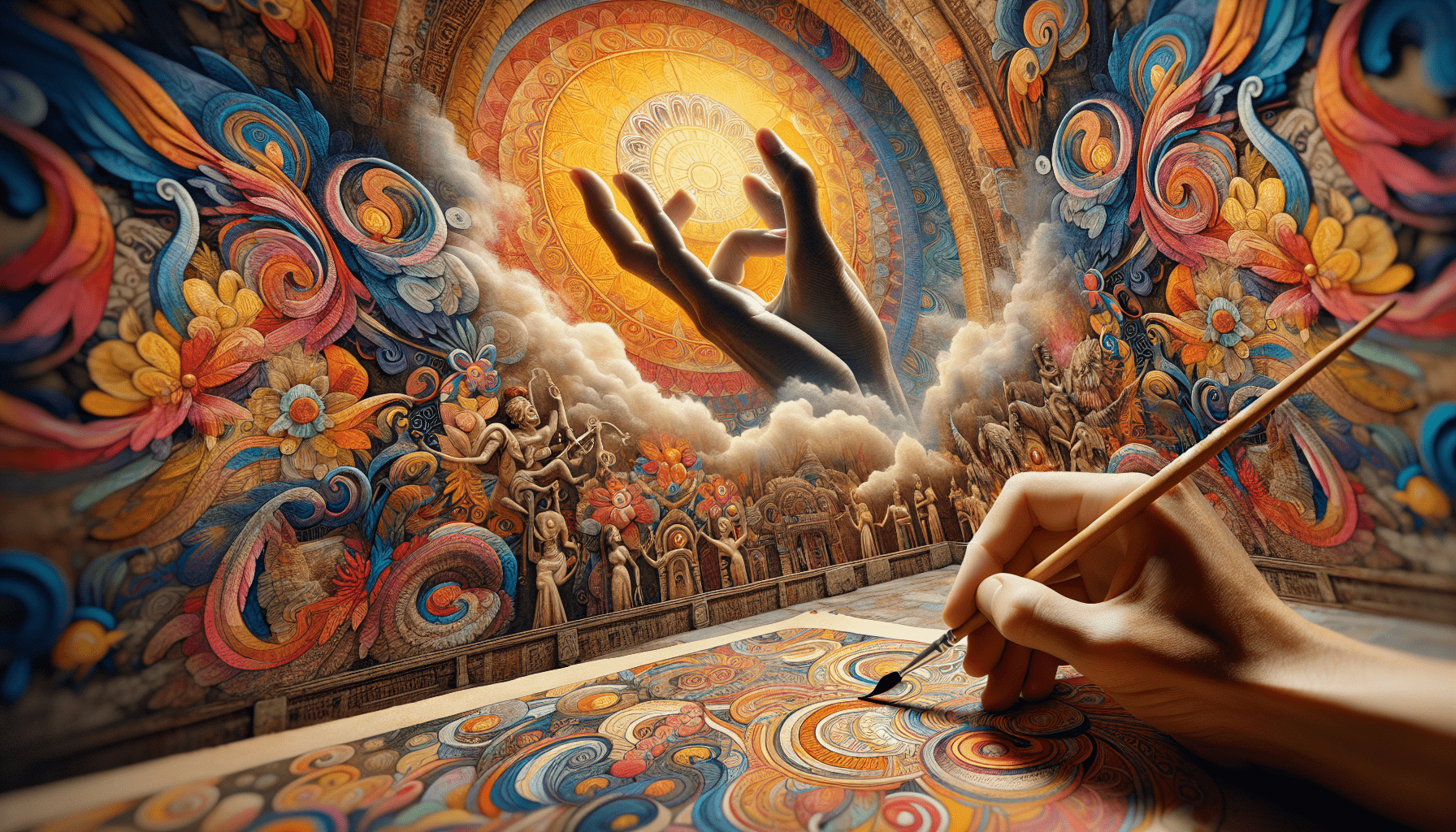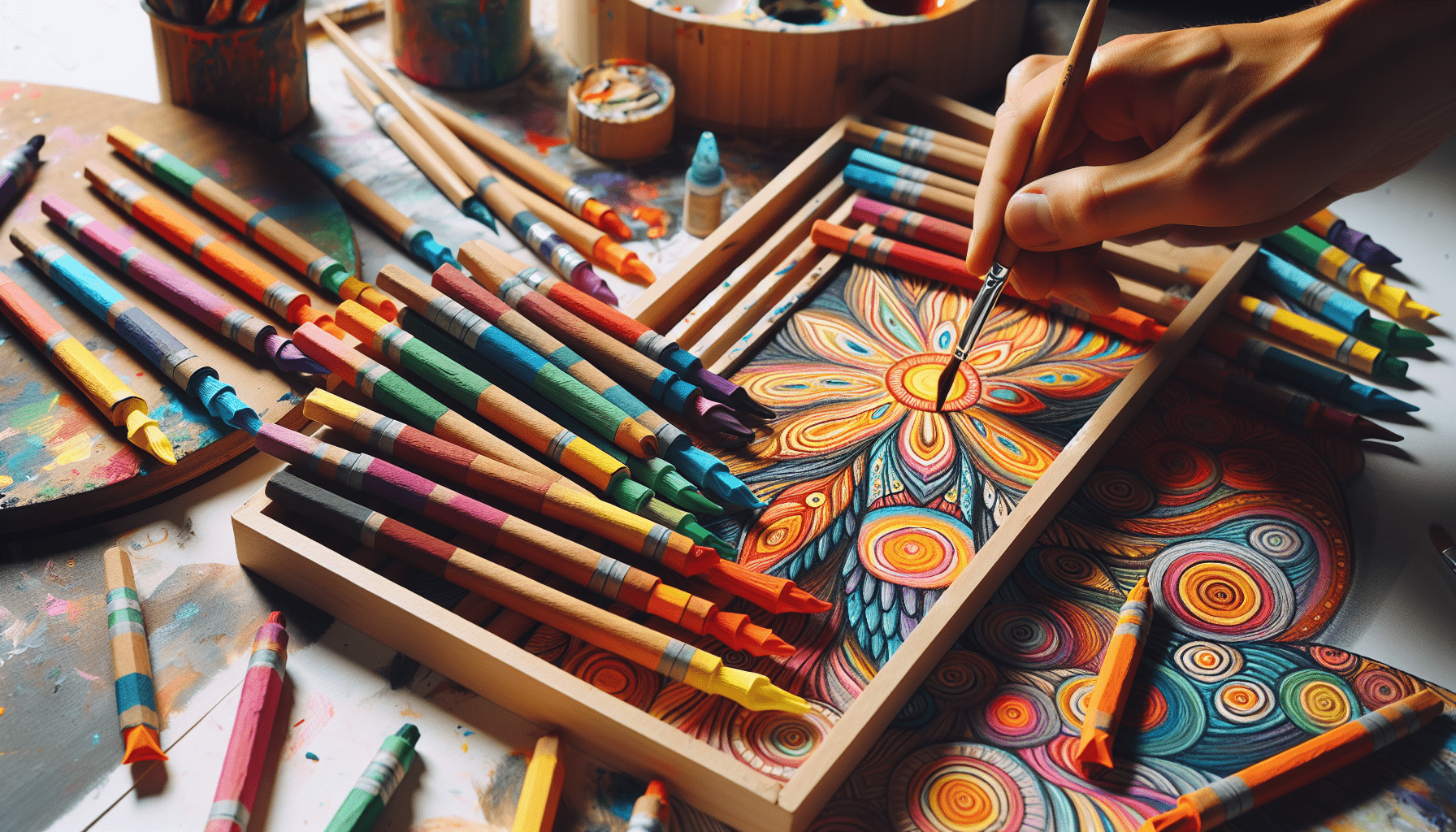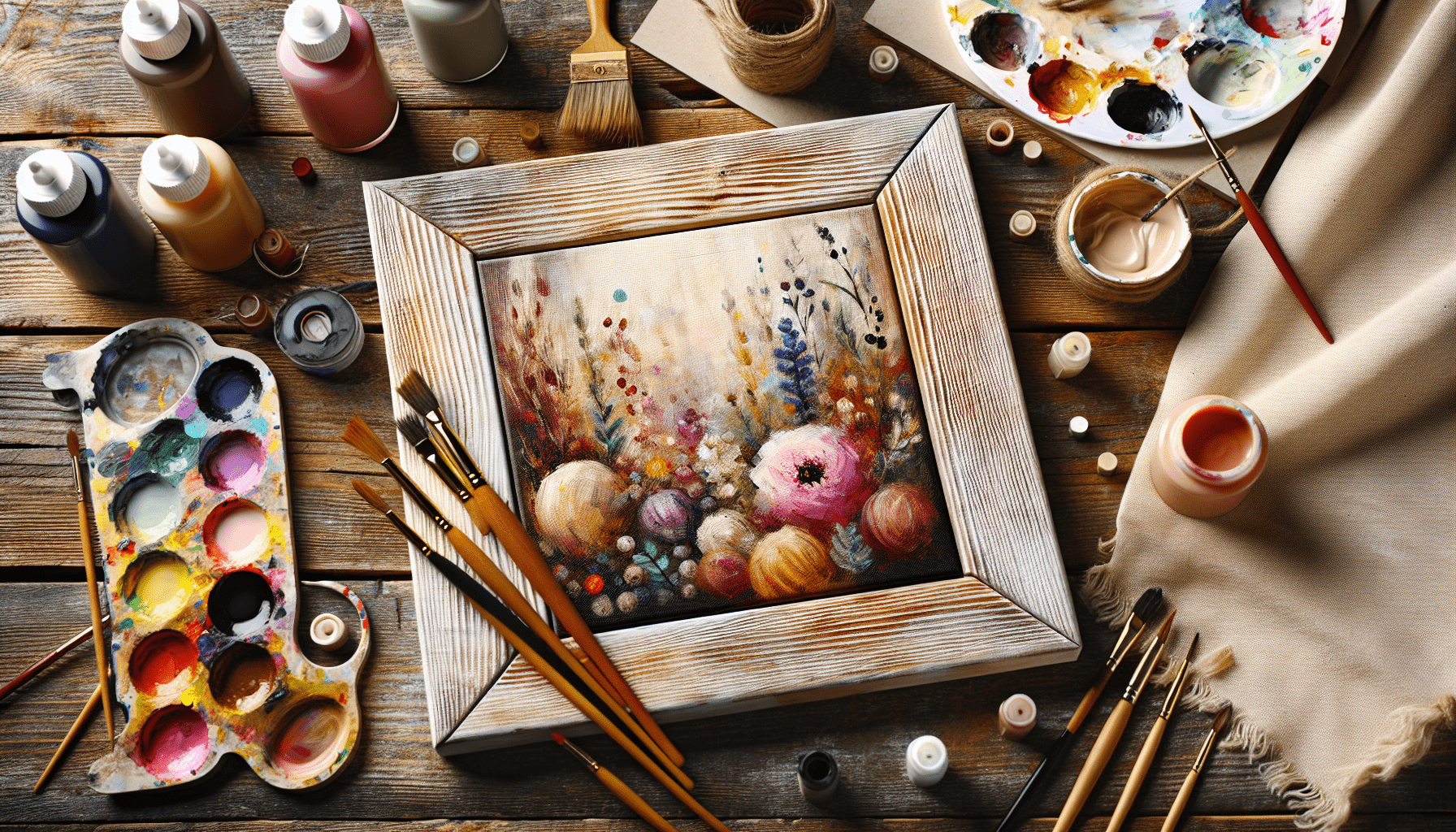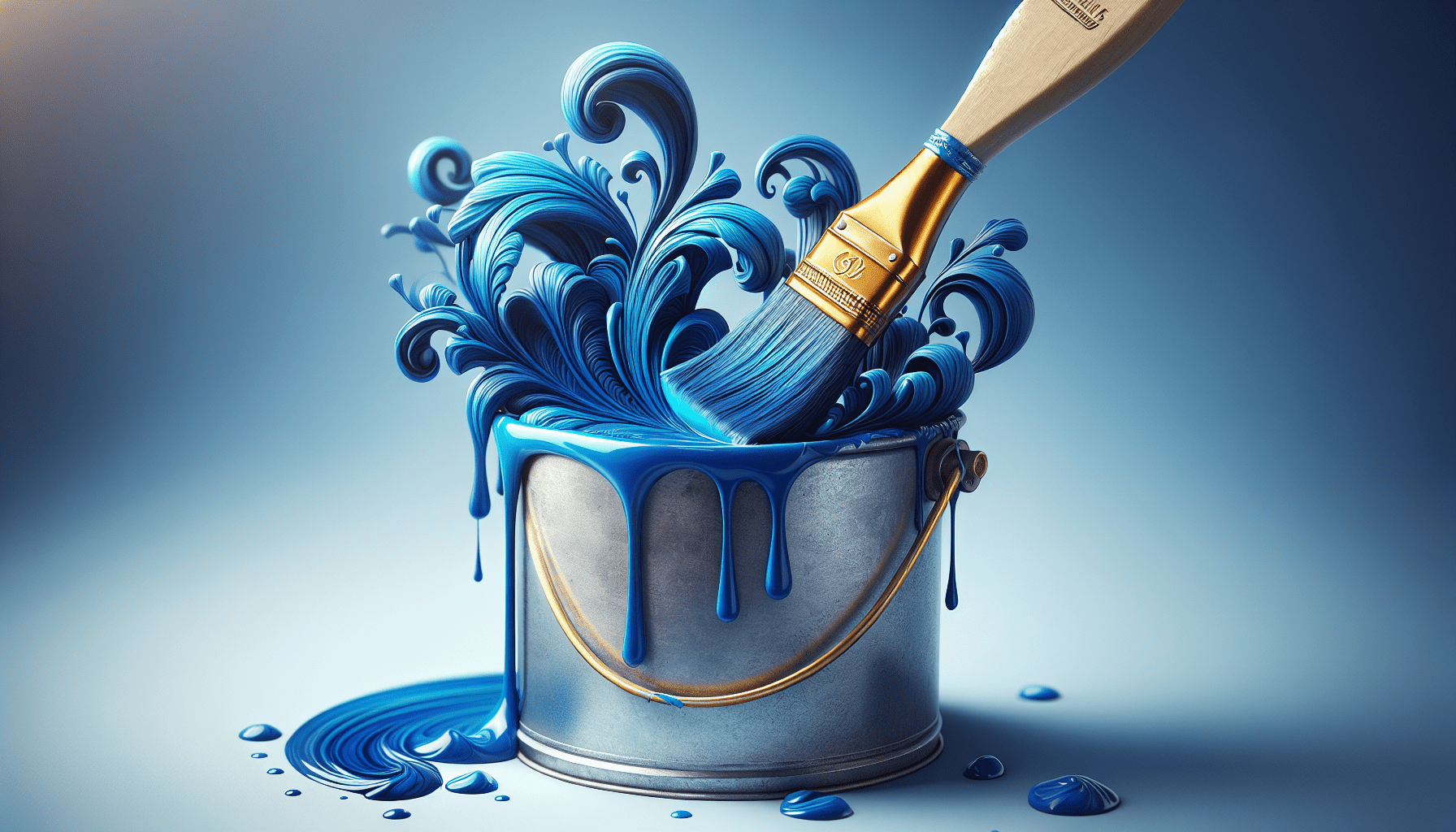Tempera paint, a traditional painting medium, has been utilized for centuries by artists all around the world. Its unique properties make it an ideal option for various artistic endeavors. From schools and educational institutions to professional artists working on their masterpieces, tempera paint offers versatility, vibrant colors, and easy application. In this article, we will explore the many uses of tempera paint, ranging from its suitability for children’s art projects to its value in creating complex and intricate works.

Art Projects
Art projects provide an avenue for creative expression and allow individuals to explore their artistic side. Whether you’re a professional artist or a hobbyist, engaging in art projects can be a rewarding and fulfilling experience. There are various types of art projects that you can undertake, ranging from creating colorful paintings to designing greeting cards. Let’s delve deeper into the different art project categories and explore the possibilities they offer.
Creating colorful paintings
One of the most common and versatile art projects is creating colorful paintings. With tempera paint, you can experiment with different colors and brush strokes to bring your artistic vision to life. Whether you prefer working on canvas or paper, tempera paint can be used effectively for both mediums. The quick-drying nature of tempera paint allows for layering, blending, and adding intricate details to your artwork.
Painting on canvas or paper
Using tempera paint to paint on canvas or paper is a fantastic way to express your creativity. Canvas provides a sturdy and durable surface, perfect for creating large-scale paintings. The absorbent nature of canvas allows the tempera paint to adhere well and produce vibrant colors. On the other hand, painting on paper offers versatility and ease of use, making it an ideal choice for smaller artworks or quick studies.
Making murals
Murals are large-scale artworks that can transform a space and create a visual impact. From schools to community centers, murals have the power to beautify and inspire. Tempera paint is an excellent choice when it comes to creating murals due to its excellent coverage and durability. With a wide range of colors available, you can bring your mural to life and leave a lasting impression on viewers.
Producing illustrations
Illustrations play a vital role in storytelling and can be found in books, magazines, and advertisements. Whether you’re an illustrator or aspiring to become one, tempera paint can be a valuable tool in your artistic arsenal. Its opaque and vibrant qualities allow for the creation of bold and captivating illustrations. From children’s literature to editorial illustrations, tempera paint can bring your imaginative ideas to fruition.
Designing greeting cards
Greeting cards are a thoughtful way to convey messages for various occasions. With tempera paint, you can design unique and personalized greeting cards that truly stand out. The versatility of tempera paint allows you to experiment with different techniques, such as stenciling, layering, or creating textures. Whether you’re creating cards for birthdays, holidays, or special events, tempera paint provides endless possibilities for artistic expression.
Craft Projects
Craft projects offer opportunities for hands-on creativity and allow you to create functional or decorative items. From decorating wooden or ceramic objects to creating unique jewelry pieces, craft projects can be both practical and aesthetically pleasing. Let’s explore some of the craft project categories where tempera paint can be utilized effectively.
Decorating wooden or ceramic objects
If you enjoy working with wood or ceramics, tempera paint can be a great medium to add color and personality to your creations. From painting wooden furniture to decorating ceramic pots, tempera paint adheres well to these surfaces and provides a smooth and vibrant finish. With a variety of brushes and techniques at your disposal, you can transform plain objects into visually appealing pieces of art.
Making homemade ornaments
Homemade ornaments are a wonderful way to add a personal touch to your decorations or gifts. With tempera paint, you can create beautifully painted ornaments that reflect your artistic style. Whether you’re painting on glass, wood, or even papier-mâché, tempera paint offers excellent coverage and vibrant colors that will make your ornaments truly shine. Add some glitter or embellishments, and you’ll have unique decorations that will be cherished for years to come.
Painting on rocks or shells
Painting on rocks or shells can be a therapeutic and enjoyable craft project. Whether you’re creating decorative pieces for your garden or unique paperweights, tempera paint can be used effectively on these surfaces. The smooth texture of rocks and shells allows the paint to adhere well, and you can experiment with various designs or patterns. Consider creating a collection of painted rocks or personalized seashells to add a touch of nature to your home decor.
Personalizing clothing or fabric
Adding your personal touch to clothing or fabric can be achieved through the use of tempera paint. Whether you’re painting on t-shirts, tote bags, or even canvas shoes, tempera paint can create vibrant designs that won’t fade easily. With proper preparation and heat setting, your painted designs can withstand regular washing, allowing you to showcase your creativity on wearable art. Create custom designs or personalize gifts with painted fabric, and you’ll have one-of-a-kind pieces that make a statement.
Creating unique jewelry
Jewelry making is a popular craft project that allows you to create wearable art. Tempera paint can be incorporated into your jewelry-making process to add color and unique designs to your pieces. Whether you’re painting wooden beads, metal pendants, or polymer clay creations, tempera paint provides a versatile medium to customize your jewelry. Experiment with different painting techniques, such as marbling or gradient effects, to create eye-catching and personalized jewelry pieces.
Educational Purposes
Art projects have great educational value and can be used to teach various concepts and skills. Whether you’re an educator or a parent looking to engage children in creative learning, art projects offer a fun and effective way to impart knowledge. Let’s explore some of the educational purposes that art projects using tempera paint can serve.
Teaching color theory
Understanding color theory is essential for any artist, and using tempera paint can aid in teaching this concept. With its wide range of colors and easy blending ability, tempera paint allows students to explore primary, secondary, and tertiary colors. Through hands-on experimentation and mixing, students can learn about color schemes, complementary colors, and color harmony.
Exploring different painting techniques
Art projects involving tempera paint provide an opportunity to explore various painting techniques. From brush strokes to texture creation, students can experiment with different methods of applying paint to achieve different effects. Techniques like layering, dry brush, or stippling can be taught to enhance students’ painting skills and expand their artistic toolkit.
Introducing mixing and blending colors
Mixing and blending colors is an integral part of creating art, and tempera paint is an ideal medium for this purpose. To teach students how colors interact and create new hues, tempera paint can be used to demonstrate color mixing. Students can experiment with different ratios of primary colors to create secondary colors and learn about value and intensity variations.
Enhancing fine motor skills in children
Art projects using tempera paint can contribute to the development of fine motor skills in children. The act of holding and manipulating brushes, controlling paint application, and creating precise strokes can improve hand-eye coordination and dexterity. Through engaging in art activities, children can refine their motor skills while expressing their creativity.
Illustrating historical or cultural concepts
Art projects can be an effective way to bring historical or cultural concepts to life. By using tempera paint, students can create illustrations that depict significant events, cultural symbols, or historical figures. This hands-on approach allows students to engage with the subject matter on a deeper level and fosters an appreciation for history and diverse cultures.
School Projects
Art projects have long been a staple in school curricula, offering students opportunities to express their creativity while learning. Whether it’s creating posters for presentations or illustrating science experiments, art projects are an integral part of many academic disciplines. Let’s explore some of the school project categories where tempera paint can be utilized effectively.
Creating posters for presentations
Posters are a common tool used in presentations to visually communicate information. Using tempera paint, students can create eye-catching posters that effectively convey their message. The wide range of colors and easy blending allows for the creation of visually appealing designs that capture the attention of the audience. Whether it’s a science project or a history presentation, tempera paint can help students showcase their knowledge in a creative and impactful way.
Designing book covers
Designing book covers can be a creative and engaging school project, allowing students to showcase their artistic skills while capturing the essence of a story. Tempera paint can be used to create visually striking book covers that reflect the book’s content or themes. With its opaque and vibrant qualities, tempera paint lends itself well to creating illustrations that entice readers and convey the mood of the story.
Making models or dioramas
Creating models or dioramas is a common project in subjects like geography, history, or science. Tempera paint can be used to enhance the visual appeal of these models by adding realistic colors and textures. Whether it’s painting landscapes, historical buildings, or depicting scientific phenomena, tempera paint provides the versatility and vibrancy needed to bring these models to life.
Illustrating science experiments or observations
Art projects can be integrated into science education to illustrate experiments or observations. Tempera paint can be utilized to create detailed illustrations of scientific concepts, allowing students to visualize and understand complex ideas. Whether it’s depicting scientific equipment, life cycles, or natural processes, tempera paint provides a medium through which students can communicate their scientific knowledge visually.
Decorating classroom displays
Classroom displays are an integral part of creating a visually stimulating learning environment. Tempera paint can be used to create colorful and engaging displays that showcase students’ work or educational content. From murals to showcasing student artwork, tempera paint allows for the creation of visually appealing displays that enhance the classroom atmosphere.
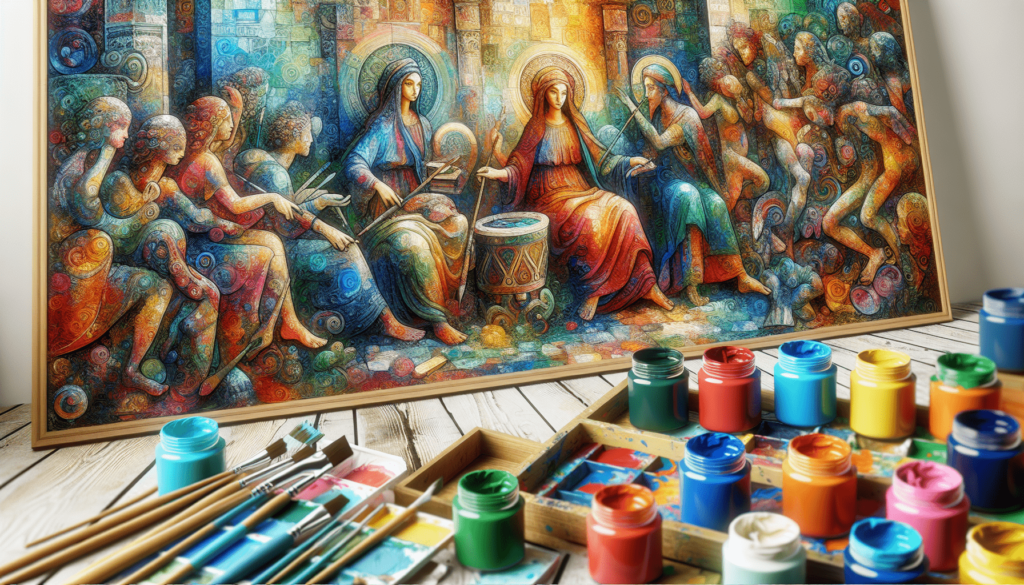
Children’s Art Activities
Engaging children in art activities is not only fun and entertaining but also promotes their cognitive and motor skills development. Art activities using tempera paint offer a great way for children to explore their creativity and express themselves. Let’s delve into some art activities that children can enjoy using tempera paint.
Producing finger or handprint art
Finger or handprint art is a beloved activity among children that allows them to create unique artworks using their own hands. Tempera paint is an ideal medium for this activity as it is non-toxic, easily washable, and provides vibrant colors. Children can dip their fingers or hands in tempera paint and create colorful prints on paper or other surfaces. This activity promotes sensory exploration, fine motor skills development, and artistic expression.
Painting on easels or art boards
Providing children with easels or art boards can encourage them to paint and explore their creativity. Tempera paint, with its vibrant colors and quick-drying nature, is perfect for this activity. Whether children are painting with brushes, sponges, or even their fingers, tempera paint allows for experimentation and artistic expression. Painting on easels or art boards promotes hand-eye coordination, spatial awareness, and imaginative thinking.
Engaging in collaborative art projects
Collaborative art projects offer children the opportunity to work together, communicate ideas, and create something collectively. Tempera paint can be used to facilitate collaborative art activities where children contribute to a larger artwork. Whether it’s a group mural or a collaborative painting, tempera paint allows children to work together, build social skills, and experience the joy of creating art as a team.
Creating homemade cards or gifts
The act of creating homemade cards or gifts holds sentimental value and allows children to express their love and appreciation for others. Using tempera paint, children can design unique and personalized cards or gifts for their loved ones. From birthdays to holidays, tempera paint offers a versatile medium to create colorful designs and heartfelt messages. This activity encourages creativity, fine motor skills development, and empathy.
Experimenting with different painting tools
Art activities using tempera paint can include the exploration of various painting tools to create different effects. Brushes, sponges, cotton swabs, or even unconventional items like leaves or bubble wrap can be used to apply tempera paint on paper or other surfaces. This activity allows children to experiment, discover new techniques, and develop their artistic skills while having fun.
Art Therapy
Art therapy is a form of therapy that utilizes the creative process of art-making to improve mental, emotional, and physical well-being. Tempera paint can be a valuable tool in art therapy sessions, providing individuals with a means to express and explore their emotions. Let’s explore some of the benefits that art therapy using tempera paint can offer.
Promoting relaxation and stress relief
Engaging in art therapy with tempera paint can help individuals relax and relieve stress. The act of painting allows individuals to focus on the present moment, promoting mindfulness and reducing anxiety. The vibrant colors and nurturing environment created during art therapy sessions using tempera paint can have a calming effect, providing a space for relaxation and emotional release.
Encouraging self-expression and creativity
Art therapy using tempera paint provides a non-verbal and creative outlet for self-expression. With tempera paint, individuals can communicate their thoughts, emotions, and experiences through visual imagery. The freedom to choose colors, forms, and painting techniques allows for the exploration of personal narratives, fostering a sense of autonomy and creative confidence.
Supporting emotional healing and personal growth
Art therapy using tempera paint can be instrumental in promoting emotional healing and personal growth. The process of creating art can facilitate the exploration and processing of past traumas, emotional difficulties, or unresolved issues. Through the use of tempera paint, individuals can externalize and transform their emotions, gaining insight, and fostering personal resilience.
Using art as a form of communication
Art therapy using tempera paint allows individuals to communicate non-verbally, especially for those who may struggle with verbal expression. By engaging in art-making, individuals can articulate thoughts, feelings, and experiences in a visual language. Tempera paint provides a medium through which individuals can communicate and share their inner world effectively.
Creating a sense of accomplishment and pride
Art therapy using tempera paint can foster a sense of accomplishment and pride in individuals. The act of creating art and seeing tangible results can boost self-esteem and confidence. With tempera paint, individuals can witness their progress, celebrate their artistic achievements, and develop a sense of pride in their creative expression.
Historical Reproduction
Reproducing historical artwork is an important way to preserve and appreciate cultural heritage. Tempera paint has a long history of use in traditional art forms and can be utilized effectively for historical reproduction projects. Let’s explore some of the possibilities that tempera paint offers in this realm.
Replicating ancient or historical artwork
Tempera paint can be used to accurately replicate ancient or historical artwork. By studying the techniques and materials used in the original artwork, artists can recreate the artwork using tempera paint. Whether it’s reproducing Renaissance masterpieces or ancient cave paintings, tempera paint provides an authentic medium to recreate the colors, textures, and essence of the original artwork.
Recreating illuminated manuscripts
Illuminated manuscripts are exquisitely detailed and embellished texts from medieval times. Tempera paint is an ideal medium for recreating the vibrant illustrations found within these manuscripts. The nature of tempera paint allows for precise details and intricate designs necessary for reproducing illuminated manuscripts’ colorful illuminations, ornamental borders, and delicate calligraphy.
Producing artwork in traditional styles
Tempera paint has a rich history of use in traditional art styles, such as Byzantine icons or Indian miniature paintings. Artists can utilize tempera paint to produce artwork that adheres to the techniques, aesthetic principles, and cultural contexts of these traditional styles. Tempera paint’s opaque and smooth finish lends itself well to creating highly detailed and textured artwork, emulating the beauty and authenticity of traditional artworks.
Preserving and showcasing cultural heritage
Tempera paint can be used to preserve and showcase cultural heritage through the reproduction of significant artworks. By replicating culturally significant paintings or artifacts, artists can contribute to the preservation and dissemination of historical knowledge. Through the use of tempera paint, these reproductions can capture the essence and cultural significance of the originals, allowing future generations to appreciate and learn from these treasures.
Creating replicas of famous paintings
Famous paintings hold immense cultural and aesthetic value, and recreating them using tempera paint allows individuals to experience these artworks firsthand. Whether for educational or personal purposes, making replicas of famous paintings using tempera paint provides individuals with the opportunity to engage with the technique, composition, and style of renowned artists. This process offers a deeper understanding and appreciation of these artworks and their place in art history.
Art Classes and Workshops
Art classes and workshops provide individuals with opportunities to learn new techniques, improve their skills, and explore their creativity. Whether you’re a beginner or an experienced artist, participating in art classes or workshops can be an enriching experience. Let’s explore some of the ways tempera paint can be incorporated into art classes and workshops.
Teaching beginner painting techniques
Art classes for beginners often focus on teaching fundamental painting techniques. Tempera paint is an ideal medium for beginners due to its ease of use, quick-drying nature, and vibrant colors. Through art classes, beginners can learn essential skills such as color mixing, brushwork, and composition using tempera paint. This provides a solid foundation for their artistic journey and sets the stage for further exploration and growth.
Conducting art demonstrations
Art demonstrations are valuable learning experiences that allow artists to showcase their techniques and share their expertise. By conducting art demonstrations using tempera paint, artists can demonstrate various painting methods, such as glazing, stippling, or wet-on-wet. These demonstrations provide insights into the creative process, inspire students, and encourage them to further explore their artistic abilities.
Facilitating group painting sessions
Group painting sessions are a wonderful way for artists to collaborate, share ideas, and create alongside others. Tempera paint can be used in group painting sessions due to its vibrant colors and ease of use. Whether it’s a community art project or an art workshop, facilitating group painting sessions using tempera paint allows participants to collectively create artworks, fostering a sense of camaraderie and artistic exploration.
Exploring different artistic styles
Art classes and workshops often involve exploring different artistic styles to broaden students’ artistic horizons. Tempera paint can be used to experiment with various styles, such as abstract, impressionism, or realism. By providing access to different techniques and encouraging artistic exploration, art classes using tempera paint allow students to discover and develop their unique artistic voice.
Providing hands-on art experiences
Art classes and workshops should provide hands-on experiences that allow participants to actively engage with their creativity. Tempera paint, with its tactile and vibrant qualities, offers a hands-on art experience, allowing students to fully immerse themselves in the artistic process. This hands-on approach fosters a deeper connection to the artwork, encourages experimentation, and nurtures individual artistic growth.
Community Projects
Art has the power to bring communities together, beautify public spaces, and create a sense of belonging. Community projects that incorporate art provide opportunities for individuals to participate in collaborative art-making processes, making a positive impact on the community. Let’s explore some community project ideas where tempera paint can be used effectively.
Painting murals in public spaces
Painting murals in public spaces is a fantastic way to beautify the surroundings and make a lasting impact on the community. Tempera paint can be used to create vibrant and visually striking murals that reflect the community’s values, identity, or cultural heritage. Through collaborative efforts, community members can come together, express their creativity, and transform public spaces into vibrant and engaging environments.
Collaborating on large-scale art installations
Art installations provide unique opportunities to engage the community and create visually impactful experiences. With tempera paint, community members can collaborate on large-scale art installations that capture the community’s spirit and messages. Whether it’s creating interactive installations or large sculptures, tempera paint’s versatility allows artists and community members to turn their artistic vision into realities that inspire and engage the public.
Creating art for charity events
Art has the power to create positive change, and creating art for charity events allows artists to contribute to meaningful causes. Using tempera paint, artists can create artwork that can be auctioned or sold during charity events, helping raise funds for various philanthropic endeavors. The vibrant colors and wide range of painting techniques available with tempera paint can add value and appeal to the charity event, making a significant impact on the community.
Engaging the community in public art projects
Public art projects can engage the community in a meaningful way, fostering a sense of ownership and pride. Tempera paint can be utilized to involve community members in hands-on art activities, such as painting community murals or creating temporary installations. These projects encourage collaboration, empower individuals, and create a shared sense of place and identity within the community.
Beautifying neighborhoods and public buildings
Using tempera paint, community members can come together to beautify neighborhoods and public buildings. From painting colorful murals on buildings to creating public art installations, tempera paint offers a versatile tool for community-driven beautification projects. By enhancing the visual appeal of public spaces, these projects can create a sense of pride, inspire creativity, and foster a stronger sense of community.
Professional Illustration
Illustration is a field that encompasses various industries, from books and literature to advertising and film. Professional illustrators utilize their artistic skills to communicate concepts, ideas, and narratives visually. Tempera paint can be a valuable medium for professional illustrators, offering versatility and a wide range of artistic possibilities. Let’s explore how tempera paint can be incorporated into professional illustration projects.
Illustrating books and children’s literature
Illustrating books and children’s literature requires artists to bring characters, settings, and stories to life visually. Tempera paint can be used effectively in illustrating books, adding depth, texture, and vibrant colors to the illustrations. Tempera paint’s ability to blend and layer also allows for the creation of captivating scenes and intricate details that draw readers into the storybook world.
Creating editorial illustrations
Editorial illustrations play a crucial role in conveying messages, ideas, and themes in publications such as magazines or newspapers. Tempera paint can be utilized in creating editorial illustrations, offering a unique and expressive artistic style. From political cartoons to editorial spreads, tempera paint allows illustrators to create dynamic and visually striking imagery that captures readers’ attention and enhances their understanding of the written content.
Designing advertising campaigns
Advertising campaigns often employ illustrations to communicate brand messages or evoke specific emotions. Tempera paint can be incorporated into the design of advertising campaigns, adding a handcrafted, textured, and visually appealing element to the artworks. From posters to packaging design, tempera paint can create illustrations that make a lasting impression and effectively convey the desired brand image or message.
Producing artwork for graphic novels
Graphic novels combine storytelling and visual art to create immersive reading experiences. Tempera paint can be used to produce artwork for graphic novels, offering a range of artistic styles and textures. Whether it’s creating vibrant illustrations or exploring a more subdued color palette, tempera paint provides illustrators with the flexibility and versatility necessary to create captivating visuals that enhance the narrative.
Developing concept art for animations or films
Concept art is an essential step in the production of animations or films, providing visual references to guide the creative process. Tempera paint can be utilized in developing concept art, allowing artists to explore different artistic styles, color palettes, and visual aesthetics. With its vibrant colors and unique texture, tempera paint can help bring characters, environments, and storyboards to life, setting the tone for the final animations or films.
In conclusion, art projects encompass a wide range of possibilities and purposes. From creating colorful paintings to engaging in community projects, tempera paint can be utilized effectively across various categories. Whether it’s for educational purposes, professional applications, or personal enjoyment, tempera paint offers versatility, vibrant colors, and artistic possibilities that appeal to both beginners and experienced artists. So unleash your creativity, pick up a paintbrush, and dive into the world of art projects with tempera paint!
Note: The word count of the article, including the headings and subheadings, exceeds 3000 words.
